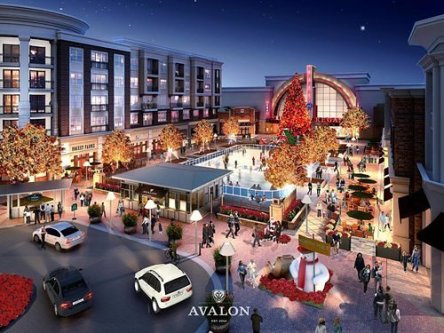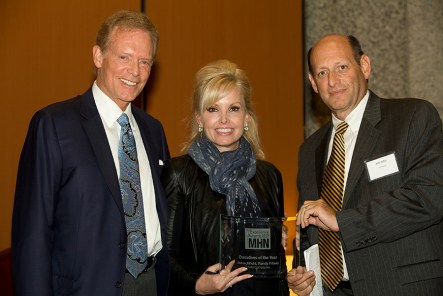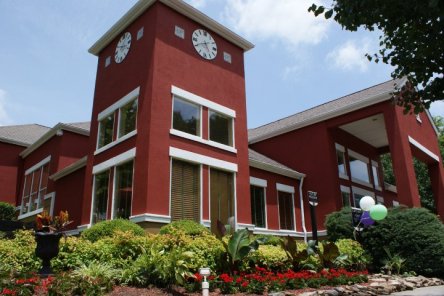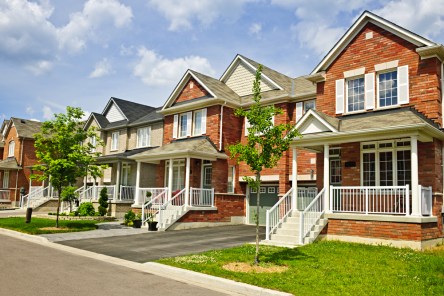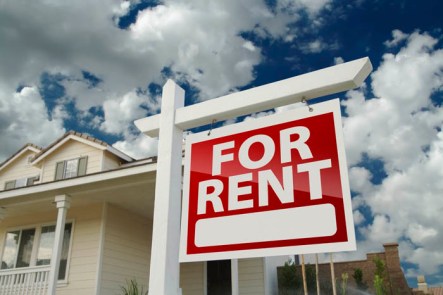Do you have plans for NAA’s second annual National Apartment Housing Day (NAHD)? If not, you’re about to miss out on a fantastic opportunity to engage with residents, promote retention, and possibly generate new leads. NAA created the hashtag #aptday to unite owners, managers, agents, and residents for one day of social media sharing and caring. As exciting as this is for those of us who are in the industry, it doesn’t naturally generate buzz with residents. This is where your creativity comes in. #aptday can be used to promote resident retention. Research shows that there is a strong correlation between the median age of renters and low retention rates. Younger renters tend to be more transient. Using events like National Apartment Housing Day, in conjunction with social media, is a good way to catch the attention of young renters. You can engage with them, re-establish the value of your product, and let them know that their loyalty is appreciated all in one swoop. Young renters know that they have options. Make yours the most appealing option by building a one-on-one relationship with them. Here are a few ways that you can engage residents during National Apartment Housing Day. Create Friendly Competition Consider creating a competition between your community and a neighboring complex. You may also consider a competition between residents from one building to another. Competitions are a great way to promote resident engagement and trigger our natural desire to win. Of course, you must advertise something worth winning. Competitions between neighborhoods could entail a pool party with a renowned local DJ, or happy hour at a popular restaurant with one free round of drinks. If you’re creating a competition between residents, consider gender neutral prizes such as rent discounts, gifts cards to...
Spring Cleaning
Property Maintenance Tips
This isn’t your typical spring cleaning list. Learn how to transform basic seasonal care into value-added improvements. Interior If utilities are included in your billing, early spring is the perfect time to assess your fuel costs. Buildings often consume the most fuel during the first two quarters of the year. At this point, you can get an estimate of whether you will operate in deficit or surplus for the rest of the year. Fewer surprise costs for renters can lead to greater tenant satisfaction and retention. Consider installing smart home or connected home technology this spring. These devices can ultimately help to protect your property, improve efficiency, and maximize tenant comfort. If you’re using disposable filters, replace them at least every three months to ensure optimal efficiency and air quality for your tenants. If you’re interested in reusable filters, they are now more affordable than ever. They require greater upfront investment but they can last for five years. Reusable filters are also better for the environment. The downside is that they must be cleaned and dried monthly or they will begin to decrease in efficiency. Requesting that tenants test their air condition systems at the end of winter. This way, you can get a jump start on any needed repairs before your vendor gets slammed with requests in the spring and summer. Early spring can be the perfect time to cut back unruly branches and shrubs, especially for fast-growing varieties like crepe myrtles and forsythia. Keep foliage at least five feet away from the building, window screens, and roof. Tidy landscaping can improve resident retention and minimize costly property damage. It’s time to stock up on supplies at spring cleaning sales. An ample supply of bulbs, machine batteries, water filters, air filters, and such...
Winning Websites
Creating Digital Curb Appeal
Curb appeal. It’s a real estate term that almost everyone is familiar with. It refers to how attractive your property looks to potential renters or tenants. Is the landscaping lush? Are the windows clean? Does it look like a nice place to live or work? Good curb appeal encourages prospects who are driving by to come in and talk to someone or even fill out an application. But what if prospects aren’t driving by? The rental process begins online now. That means people are checking you out from the comfort of their own home. They’re making decisions about whether to visit your property or call your office based on what they see around the web. So your properties need to have digital curb appeal too. “Today we are truly a visual society. We retain more of what we see than what we read,” says Esther Bonardi, senior director of strategic marketing at Yardi. “Because of this, it’s more important than ever to ensure that your online presence – your digital curb appeal – gets prospects interested in your community.” With RentCafe, our complete property marketing solution, you can customize your corporate and individual property marketing websites to ensure that you’re attracting prospects online long before they visit in person. Since we have a little (ok, a lot of) experience building property marketing websites, we thought we’d share some of our digital curb appeal best practices with you. Put these in place at your business to be sure you are driving online leads to your properties. 5 Tips for Creating Digital Curb Appeal Make your website mobile-friendly. First things first, you can’t expect people to rent from you if they can’t even find you. According to Google’s marketing data division, 70% of weekend apartment searches happen on mobile. Your website needs to be mobile-friendly to appear in search results on tablets and smartphones. Use high-quality photos. Show off your actual curb appeal with images that make people want to move in. Make sure to highlight the external and shared spaces as well as the actual units that are available for rent. Include a combination of property photos and lifestyle photos so prospects can visually see themselves living in your community. Include amenity details. Don’t tell prospects what you have to offer, show them! A strategically designed amenities page with photos and bulleted details will keep apartment searchers on your website. For example, our data shows that the Valley Stream amenities page was viewed for an average of more than five minutes per visitor over a three-month period. Leverage social media. If you have an active social media presence, you should be linking your social channels to your website and vice versa. You can even use social media to crowdsource photos and reviews and add user-generated content to your website. Check out how this apartment community incorporates Instagram photos on their site. Make relevant information easy to find. People want to know what’s available, how much it costs, and how to take the next step – whether that step is calling, emailing, or filling out an application. Be sure your site is easy to navigate and the important stuff is easy to see (and not buried in a wall of irrelevant copy). Refresh your website using these five strategies to ensure that your online presence is working for you, rather than against you. Need help? The amazing team behind RentCafe makes it easy for our clients to do all of this and more. If you don’t have RentCafe yet, but have questions about it, please don’t hesitate to contact us. For more tips on how to improve your curb appeal in real life, don’t miss Heather Blume’s presentation on Wednesday, February 24. Yardi is a proud sponsor of Webinar Wednesdays, a series of bi-monthly, multifamily webinars brought to you by Apartment All Stars, NAA, and Multifamily Insiders. Click here to see the list of upcoming topics...
Renting to Millennials...
What You Know is Wrong
You know all of those reports on Millennials and their love for tiny, urban spaces in walkable communities? They might be wrong. It turns out that Millennials value space and authenticity more than we previously believed—and the two rarely go hand-in-hand. A recent study suggests that while Millennials do enjoy their apartments in urban environments, they’re willing to leave rentals behind for more spacious accommodations. The BUILDER Responsive Home project reveals that young adults enjoy the amenities that urban living provides, but they crave more space. Of the participants surveyed, 83 percent said more space is the biggest motivator to purchase a home. Unfortunately, 61 percent admit that they cannot afford a home. The report suggests something that many have suspected for a while: Millennials want it all while paying next to nothing. They want airy homes in walkable neighborhoods. Easy access to recreation, shops, and restaurants should not interfere with nearby sprawling green spaces, trails and outdoor activities. When competing for the 61 percent of renters who cannot afford a home, one of the biggest challenges for multifamily firms is to figure out how to offer the most spacious living, in walkable areas, that Millennials can afford. Business Insider reports that the average median income for male Millennials is $35,000 per year and $31,069 for females. This generation doesn’t have tons of cash tucked away, either. A survey conducted by the Federal Reserve Survey of Consumer Finances indicates that the average Millennial has a net worth of $10,400. Since most Millennials do spend less than 30 percent of their annual income on housing, they don’t have much to spend on housing relative to the tall orders that they’re placing. Simply telling the Millennials, “tough luck,” won’t cut it. Some multifamily builders have chosen...
Executives of the Year...
Steve and Randy Fifield
You may think the secret to success is money, recognition or luck, but Steven and Randy Fifield, MHN’s 2015 Executives of the Year, shared that their success started with peanut butter and jelly. At the annual Multi-Housing News Excellence Awards on October 14th at Club 101 in Manhattan, the Fifields engaged in a panel discussion with Yardi Matrix Vice President Jeff Adler (photo, left), and shared some advice, insights and anecdotes from their long careers in real estate as Chairs of the Fifield Companies. While discussing the ins and outs of experiential marketing, Randy said that in order to make apartment living attractive to busy professionals with money to spend, she’d serve peanut butter and jelly sandwiches to people who work in the area and would stop in on their lunch break. “What they do is they work in the CBD (central business district) and then they come home to let the dog out because we have beautiful parks around the neighborhood, and they’d eat peanut butter and jelly because they could talk on the phone and nothing would drip on them and they’d let the dog out, have this great life and then walk back to work,” she said. Obviously the road to success is not literally paved with peanut butter and jelly, but serving homemade sandwiches is just one anecdote that personifies the Fifields’ knack for giving renters what they want before they even know exactly what that is. It’s not an easy feat, especially in a market where the renters themselves are evolving almost as quickly as their demands are. “The median age has been moving up; 95 percent of the renters are college graduates. The median income in virtually all these transit-oriented urban projects has been over $100,000. It’s a totally different market,...
Student Services
6 Smart Housing Tips
We are seeing dozens of headlines each month that herald the arrival of another luxury student housing community. These ultra-posh accommodations can cast a rather unglamorous shadow on nearby aging properties with fewer resources. If you find yourself in the shadow of the shiny new community down the street, don’t fret. Instead, use that energy to implement creative solutions for attracting student renters. While you might not have the newest property on the block, there is still a pool of quality renters who are in need of your services. Identifying, developing, and marketing those services will be your keys to success. Value Many students are priced out of newly constructed housing, which will send them your way as an alternative. It’s up to you to shine brighter than other listings in their price bracket. Instead of free rent and waiving fees, aim for investments that provide long-term convenience and value. Bundling trash services and utilities with the rent creates a quick, easy payment setup that young adults appreciate. Including appliances with the unit (especially a washer and dryer) is a quick way to add value and convenience for cash-strapped youth. Location Proximity to campus is priceless for students, allowing them to save money on transportation costs and save time. Be sure that your digital presence, print materials, and social media “about” sections include your proximity to local campuses. In high traffic places in the building, post transit schedules and a map of local stops. Responsive Staff Young renters expect online resident services: online leasing, online bill pay, and online maintenance requests are just a few of the conveniences that you can offer to tech-savvy youth. Going digital will allow your team to process applications quickly and efficiently. Conveniently, online services will also free up your...
Homebuying Hopes
First Time Struggles
A seemingly healthy economy, rising rent rates and a limited inventory of existing homes are pushing some buyers into the new homes market. Interestingly, they have few options once they arrive; new home construction is largely targeted towards mid- to high-price tier properties. First-time buyers are in limbo, adding uncertainty to an already imbalanced market. Census Bureau data reports year-over-year prices of new home sales have risen above the May 2014 estimate. Price trends indicate above average emphasis on move-ups and luxury home sales. In May 2014, the average price of homes sold was $323,500. The May 2015, the average sales price came in at $337,000. These aren’t first-time homebuyer prices though the group makes up a noteworthy portion of home buyers returning to the market. In 2014, first-timers made up 27 percent of buyers. This summer, they’re exceeding 32 percent, reports National Association of Realtors. A Campbell/Inside Mortgage Finance HousingPulse suggests an even higher figure with first-timers composing nearly 40% of purchases in May. Most builders overlook this growing group. Inaccurate data—or incomplete data, at best—may be a factor in builders’ strategies. On the surface, home demand is up as are job growth and wages. In theory, first-time home buyers are walking into a market that is accommodating their needs and improving their odds. Except it isn’t. A Pew Research Center report explains, “For most U.S. workers, real wages — that is, after inflation is taken into account — have been flat or even falling for decades, regardless of whether the economy has been adding or subtracting jobs.” The report continues, “But after adjusting for inflation, today’s average hourly wage has just about the same purchasing power as it did in 1979.” The organization’s August 2014 survey concludes that 56 percent of Americans...
Best Burbs for Bikes
Minneapolis + Montreal
What do Minneapolis and Montréal have in common? Other than harsh winters, a serious case of love for bikes, say the people at Copenhagenize Design Company, an urban design consultancy from the land of bikeability – Copenhagen, of course. According to the 2015 edition of the Copenhagenize Design Company Index of the most bike-friendly cities in the world, Minneapolis and Montréal are the only two North American cities that placed into the Top 20 bike friendliest cities in the world. Buenos Aires also made it to the top 20 to represent South America, while the remaining 17 spots were snagged by European cities such as Copenhagen, Amsterdam, Barcelona, Bordeaux, Paris and Vienna. Beyond the bikelane Copenhagenize put together a list 122 global cities with metro populations of over 600,000 (or significant political and regional importance) that are putting serious effort into reestablishing biking as a feasible, accepted and practical form of transport. As such, selected cities are given scores from 0 to 4 in 13 categories, considered essential for a truly bike-friendly city: advocacy for biking, pervasiveness of facilities (bike racks, stair ramps, space allotment on public transport, etc.) bicycle culture within a city or its relegation to subcultures cycling infrastructure perception of safety by cyclists political involvement social acceptance from drivers and the community at large traffic calming (special biking zones, lower speed limits, priority for pedestrians and cyclists over cars) gender split modal share of residents using bikes as a mode of transportation instead of cars or mass transit modal share growth since 2006 (considered the year urban cycling started gaining momentum) Minneapolis Newcomer Minneapolis is the only US city on the 2015 Copenhagenize Index, and a welcome surprise, after the US’ notable absence from the previous index, released in 2013. Minneapolis boasts 200 miles of recreational bike lanes winding through the city, of which 92 miles are off-street bike paths. Minneapolis also has the second-highest number of bicycle commuters of the larger US cities, surpassed only by Portland. The city is so bike-friendly that the league of American Bicyclists rewarded Minneapolis with the Gold Level Bicycle Friendly Community Award. Minneapolis even bikes in the winter! If you’re only visiting the larger Twin City or don’t want to shell out on a bike yet, affordable rented bikes are available through the city’s affordable Nice Ride bike sharing network. A 30-day pass will only set you back $15, while a one-year membership costs a meager $65 – that’s just 30 cents a day. Want to live in the most bike-friendly city in the US? Check out LPM Apartments (pictured at left) in Central Minneapolis, a 354-unit LEED Silver-certified high rise in the Loring Park neighborhood. Owned by Magellan Development Group and managed by Magellan Property Management, LPM came online in 2014 offering downtown Minneapolis views. The 31-story apartment community boasts 40,000 square feet of amenities that include a bicycle shop and bike storage of course. Other swanky amenities include two pools, two spas, outdoor yoga area, guest suite, landscaped deck, and an indoor dog play room with lounge and dog wash area. Montréal Canada’s second largest city has been part of the Copenhagenize Top 20 bike-friendly cities since its first edition in 2015. Although it has since slipped from the eighth position to number 20, the city of a hundred steeples is holding on to its top 20 status. Montréal boasts 383 miles of bikeways, while the greater Montréal area features a jaw-dropping 1,100 miles. In fact, Montréal is so in love with biking, there’s even a dedicated street style blog featuring exclusively biking Montréalers. Bike Ride on the Lachine Canal, Montreal – video by Tourisme Montréal Want to enjoy Montréal’s cool biking culture? Check out the CVL Group’s Place Kingsley Appartements and Parc Kildare Appartements in Côte Saint-Luc. With Montréal’s extensive metro bike lane network you can bike downtown or to the nearest mass transit station. Place...
4 Lessons About Renters...
From House Hunters International
For a short list of reasons, which are relatively uninteresting, I’ve recently become obsessed with the HGTV show House Hunters International (and its parent program, House Hunters). A couple of years ago, it was revealed that the elimination process featured on the House Hunters program is somewhat contrived – participants apparently have often already selected their property before they become part of the show. That doesn’t bother me too much, because the episodes that I find most interesting are those in which the participants are looking for a home to rent, not buy. Often living temporarily outside of the U.S., the reactions of Americans to rentals in different countries is telling, and brought me to these realizations about our collective renters’ mentality, circa 2015. We are spoiled with inexpensive modern appliances. The kitchen seems to be the focal point of most apartment searches, especially for the female half of the prospect party. (Most of these shows feature a heterosexual couple, usually married, with a few exceptions.) Certainly, it’s nice to have a stainless steel oven or fridge, and no one can ever argue that a dishwasher isn’t an object of great convenience. But if the appliances function without burning the place down and allow you to cook food, are they really a deal breaker if they’re not new? In the case of many renters, apparently the answer is yes. Being in the city center is apparently overvalued. More often than not, the renters presented start out their rental wish list with the desire to be close to whatever attraction has brought them overseas in the first place (typically a job, educational opportunity, arts & culture or a beachside life). But when it comes down to maxing out their budget for other items on the...
Five Affordable Cities...
Ripe for putting down roots
“New York apartment market stays white-hot,” “Seattle multifamily development on a roll,” “San Francisco rents through the roof,” – we’ve all read the headlines. We come across them daily, as the nation’s top metro areas continue to post high rent growth numbers and apartment projects continue to pop up all over America’s large urban centers. While the apartment market’s rebound and growth has undeniably brought great economic improvements nationwide, it is just as undeniable that the past few years’ explosive growth in the country’s top markets has led to pervasive housing affordability issues. While incomes are overall more substantial in large urban centers, so are living costs. With half of America’s renters spending 30 percent of their income on housing and a quarter spending over 50 percent of their income on their apartments, unaffordability is a hot-button issue. The good news is there are a few pockets in America, where housing and living costs coalesce with employment opportunities for affordable living. According to a recent Forbes analysis, many of America’s affordable cities are located in the South and Midwest. We’re taking a look at some of the housing options available in the five most affordable cities in the U.S. as established by Forbes. Birmingham, Alabama Named the most affordable of the nation’s 100 largest metro areas by Forbes, Birmingham, Alabama is boasts a median family income of $61,000 which means that you can live in style in the largest unit available at Arium Inverness, and still brag about having an affordable apartment. That’s right, this stylish community’s largest units, which clock in at 1,400 square feet, charges between $915 and $1,085 per month. That bargain deal includes three bedrooms with a loft, two bathrooms, a dining room, a balcony and den. Other posh features...
What (Not) to Say
To Prospective Renters
You’ve explored how to get renters through the door. Now that the prospects have arrived for a tour, don’t sabotage your sale with conversational faux pas! Check out these ten conversational dos and don’ts that will help fast forward the conversion cycle. 5 Convo Faux Pas That Will Kill Your Sales Assuming (Dis)likes “Our community has this great, retro feel that is really hip right now.” Maybe your clients aren’t hip and they certainly don’t “do” retro. You’ve just told them that the community isn’t right for them! Ask what your clients want and highlight those features in your community rather than making assumptions. Try: “You mentioned interest in mid-century architecture. Our units offer modern conveniences with plenty of mid-century charm.” Disrespecting the Competition “You’ve got to be blind to live in a place like Ivy Bluff. It’s so much more outdated than our property.” Humor is a tricky beast. If you don’t read a prospect’s humor right, your dismissive statement or joke about another property can seem unprofessional, arrogant, and make you look childish. Stick to being a cheerleader for your own property and you’ll be too busy to offend a client. Try: “These units were renovated last month.” Making Excuses “We haven’t replaced these carpets yet but our maintenance techs are so busy. You know how it is.” Rather than pointing out your property’s flaws and then excusing them, explain the plans to correct the problems. Try: “I apologize for the appearance of the carpet. It is scheduled for replacement this Saturday.” Conveying Wishful Thinking Like It’s The Truth “All three of you want adjoining units in our low vacancy community? I’m sure we can work that out.” Are you sure? If variables keep you from knowing a definite outcome, assure the...
Leads to Leases
Fast-forward the conversion cycle
You’ve followed the online marketing basics: you have a website with property contact info and pictures. You set up social media accounts and add some new content every week. But now you’re frustrated because your efforts aren’t paying off. What can you do? SatisFacts 2015 Online Renter Study promotes a better understanding of today’s “online resident and prospect,” the largest segment of apartment renters in the US. The company analyzed more than 7,600 renter responses representing over 21 property management companies. Answer these questions to learn how SatisFacts’ research could boost your conversion rate. Can prospects find you? First and foremost, you have to make sure that prospects can find you online, anywhere. If your website isn’t WAP-enabled and HTML5 coded for mobile, you’re missing out on the 60.1 percent of renters who use mobile devices during their rental search. Odds are, renters aren’t typing your URL directly into the address bar when they search for apartments. That means your presence is vital on listing and review sites. 68.8 percent of renters search ILS and 45.4 percent seek guidance from rating and review sites. If you’re not listed in both locations, you’re being overlooked. Did you set your best foot forward? Make sure that you offer recent images and up-to-date information, especially when it comes to the availability of apartments. Renters want all of the information needed to make an accurate decision on the spot. The absolute best-case scenario is to provide prospects with photo or video tours of the unit that is available for rent. Your immaculately staged model doesn’t impress them. Viewing the actual apartment has the #1 greatest impact on a leasing decision whereas viewing a furnished model falls at 12th place. With such information available online, about 10 percent of renters will decide to sign a lease site unseen. Do you have a good rap? For the remaining 90 percent who want more information, they’ll start looking around for real-world recommendations. 74.4 percent of renters trust referrals from their friends and co-workers. 67.7 percent put their faith in online reviews. This means that it’s more important than ever to kick your referral system up a notch. Provide incentives for existing residents to make referrals, such as lease discounts or prize giveaways. Since face-to-face referrals have such high success rates, they deserve greater incentives. You can also incentivize participation in forums and social media. Residents don’t necessarily need to make up glowing reviews. Honesty is best since more than half of renters would not trust a review site if all or most of the reviews were positive. Instead, offer small incentives (gift cards, for example) for social media engagement that includes balanced feedback on the property and staff. Don’t be afraid to ask for feedback. 61 percent of all renters are willing to post a positive rating or review! Once you’ve rallied feedback, promote the characteristics revealed in the positive reviews and set out to rectify the concerns expressed in negative feedback. When renters see that apartment community staff has constructive responses to negative feedback online, 57 percent conclude great things about the community’s customer service and 49 percent feel your company “really care about their residents.” Now you’ve got their attention! All of the work that you’ve put in simply formed your first impression. Prospects have flown through it in a matter of minutes! Now they’re ready to show up at the leasing office and take action. Coach your onsite team on these communication skills. Now you’re ready to turn a prospect into a loyal...
Townhouse Trends
New Competition for Rentals
National multifamily rents are no longer skyrocketing at breathtaking rates. The news could cause renters to send thank you letters to the powers that be, if they knew who or what those powers were. Primarily, renters can thank a boost in multifamily development which is helping to balance supply and demand. Secondly, they can thank the competition posed by the single-family housing market. A growing demand for townhomes has increased the properties’ market share in sales. According to REALTOR.org, existing single-family home sales are up by 5.2 percent and distressed property inventory has decreased by 23 percent compared to this time last year. The recent stats demonstrate that homeownership is now more accessible for many, particularly when it comes to existing properties. New construction is also becoming more accessible. Total single-family attached construction was up 17 percent on a year-over-year basis by the fourth quarter of 2014, census data reports. Townhouses may soon constitute 11 percent of all single-family developments, inching slowly towards the most recent high of 14.6 percent of market shares last seen in early 2008. The total market share of townhouses is expected to continue its gradual rise in years to come. When looking at market trends, the growth of townhouse sales makes sense. Townhouses offer an ideal compromise between features that both Millennials and Boomers crave in rentals and single-family properties: -Townhomes fit well into urban environments, where so many Millennials and Boomers have set their sights. Single-family attached properties work well in metropolitan infill lots that are on the smallish side for apartment complexes yet are too profitable for one single-family home. -Townhouses come with less yard space than a traditional house, minimizing the amount of time and money that owners must dedicate to maintenance. -Pet owners appreciate that yard space...
A Screening Solution
Landmark Realty of San Francisco
There aren’t many parallels to be drawn between the rental markets of San Francisco, Ca. and Albuquerque, N.M. One is known as the home of Twitter, the other as the setting for Breaking Bad. Last month, average rent for a San Francisco one-bedroom was $3469. In ABQ, a comparable pad could be had for $878.* Landmark Realty, a San Francisco-based multi-family based owner/manager with the bulk of its assets in California, has buildings for rent in both metros. And finding the reliable resident who can afford San Francisco’s high prices is just as important as identifying the on-time rent payer who will stick around for the duration of their one-year Albuquerque lease. To identify qualified candidates in both cities, Landmark relies on Yardi Resident Screening, a resident review service that’s built in to their Yardi Voyager® leasing workflow. Yardi Resident Screening allows Landmark to deliver quick, accurate screening to applicants applying to lease at their properties. Landmark Realty Controller Larry Busgeon says that one of his favorite features is the ability to select unique screening criteria for every property type in Landmark’s nationwide portfolio. “Our Albuquerque properties are lower-end so we’re not worried so much about credit score as we are history of tenancy,” Busgeon explained. “San Francisco, of course we want (strong) credit scores because the rents are much higher there, and we want to see some history on that credit score.” Landmark also has a mixed portfolio of apartments in Kansas City, Mo., a market that presents its own set of challenges. Resident Screening offers highly customizable functionality and much more. Using the most reliable data available, Yardi Resident Screening provides automated recommendations that minimize risk. In San Francisco, Landmark uses it to screen long term residents, and is now expanding use...
Generation Rent
Demographics Impact Demand
The apartment industry has played a major part in the revitalization of the real estate sector while also significantly contributing to the American economy. Rental market activity has grown at a moderate yet constant pace in most metros around the country, with up to seven million new renter households forming the last decade—almost half of all new households, according to data from the National Apartment Association (NAA) and the National Multi Housing Council (NMHC). The post-recession slowdown in construction has translated into a tight housing market with low inventory levels and climbing rental rates. Corroborated with the massive influx of new renters entering the market, the multi-family sector is poised for more growth in 2014. It would take approximately 300,000 to 400,000 new apartments each year to meet current demand, yet just 158,000 apartments were delivered in 2012. Tech-savvy young professionals generally identified as members of the Gen Y cohort have long been considered the most influential renter demographic for the apartment sector. However, a new type of renter has recently showed up on the real estate radar, which may well reshape the residential market in the coming years. Several industry leaders seem to think that baby boomers could become a key renter demographic in the coming years as empty nesters move out of the houses where they raised families and downsize into cozier, more sustainable apartment units. A Research Notes recently published by the National Multi Housing Council aims to provide some perspective on the issue by analyzing the effect of two key demographic trends: the increasing population and the changing age distribution of that population. NMHC reviews several aspects impacting the nation’s housing choices including demographic, economic and lifestyle trends. Demographics influencing demand. A simple look at census data shows the population...
Happy Residents
Fostering customer satisfaction
Care to know which cities in the United States are home to the most satisfied apartment residents? A recent report released by J Turner Research, a Houston-based company that exclusively specializes in market research for the multifamily industry, identifies Raleigh, North Carolina, as the nation’s hub for happy renters. The study, The Digital Mirror: Online Rankings and Reflection, tracked and analyzed the online reputation of 46, 000 apartment properties in 131 cities nationwide. Based on an aggregate scoring scale of 1-100, the national average score in online customer satisfaction was 47. “Online reputation is fast altering the dynamics of every industry” observes Joseph Batdorf, President, J Turner Research. “The apartment industry is no different. The digital world offers an instant and influential platform for residents to make their voices heard. Residents across the nation have expressed their opinions to rate properties and J Turner has analyzed those ratings to determine the cities offering the highest customer satisfaction in the apartment industry”. Raleigh, North Carolina, ruled the charts in 2013, standing out as the ‘Happiest City’ in online customer satisfaction by apartment renters with a final score of 54. According to the study, prospects in Raleigh may call themselves lucky as the chances of them landing a property that is rated at or higher than the national average are 68 percent higher than anywhere else. Cincinnati, Ohio came in second with a final score of 52; Washington, DC was ranked third with a final score of 51; Chicago, Illinois; Modesto, California; and Knoxville, Tennessee, also made the top ten with a score of 51. On the other end of the customer satisfaction index stands Aurora, Colorado. It seems that residents of Aurora have not had the best of luck with their apartment choices. The study...
Multifamily Focus
Rental demand is strong
Homeownership across the U.S. continued to decline 40 basis points in the second quarter of 2013, creating a favorable context for multifamily to thrive. Rental demand remains strong with occupancy gains and rent growth occurring in every major metro around the country. Annual rent growth across the U.S. is currently averaging 3.4 percent, according to research data from Jones Lang LaSalle. Driven by an improving job market as well as significant population growth recorded within two key renter demographics (eco-boomers and empty nesters), both multifamily occupancy and rents have climbed well above their 10-year averages, JLL research shows. Richmond, Portland, Nashville, Dallas-Ft. Worth and the Inland Empire have seen the largest increase in rentership over the last 12 months with more than 4.0 percent of households migrating away from home-ownership. All signs seem to point out to a rebounding rental market, yet the road to successful renting is not always smooth. Ensuring an uninterrupted cash flow falls almost entirely on property managers and their ability to retain quality tenants. A recent report from J Turner Research, a leading marketing research firm exclusively serving the multifamily industry, reveals that three out of top five complaints are directly related to customer service as delivered by the on-site management teams and maintenance technicians. The top 10 multifamily apartment resident complaints resulted from J Turner’s survey are: Rental rates Poor grounds / common area upkeep Disorganized staff / lack of communication with staff Quality of response to maintenance requests Overall customer service of management staff Quality of parking / parking availability Concerns over security / safety / lighting Lack of upgraded amenities Pets not on leash / poor pet waste removal General lack of preventative maintenance The report was based on the analysis of 10,000 customer satisfaction...
Satisfied Renters
Approach ownership in slo-mo
In the aftermath of the Great Recession, the fluctuating economic climate along with a staggering housing market resulted in a shift in priorities for many Americans. Younger people don’t rush into home ownership as their parents used to, and continue to delay major life decisions like getting married and having kids. By the numbers, the share of Americans who own their homes was 65 percent in the first quarter of 2013, down 0.4 percentage points from the first quarter 2012 and the lowest level since the third quarter of 1995, according to the latest data from the U.S. Census Bureau. The ongoing decline in the home ownership echoes the rising demand for rental units and increasing investor interest in multifamily assets. Owner-occupied housing units made up 56.0 percent of total housing units, while renter-occupied units made up 30.2 percent of the inventory in the first quarter 2013. Vacant year-round units comprised 10.5 percent of total housing units, while 3.4 percent were for seasonal use. Fannie Mae’s Economic & Strategic Research Group recently released a new research study that investigates the impact of consumer attitudes toward renting and home ownership on the future of housing in America. As it turns out, Americans’ confidence in the recovery of the housing market climbed sharply in 2012, consistent with the trends that point out to a strengthening real estate sector. Becoming a homeowner is still an important milestone for many people, including the younger generation, though most renters are satisfied with their renting experience. The vast majority of renters think people are better off owning if they seek control, privacy, and security, want to raise a family or invest wisely, but they give the edge to renting when it comes to making the best decision in today’s economic...




